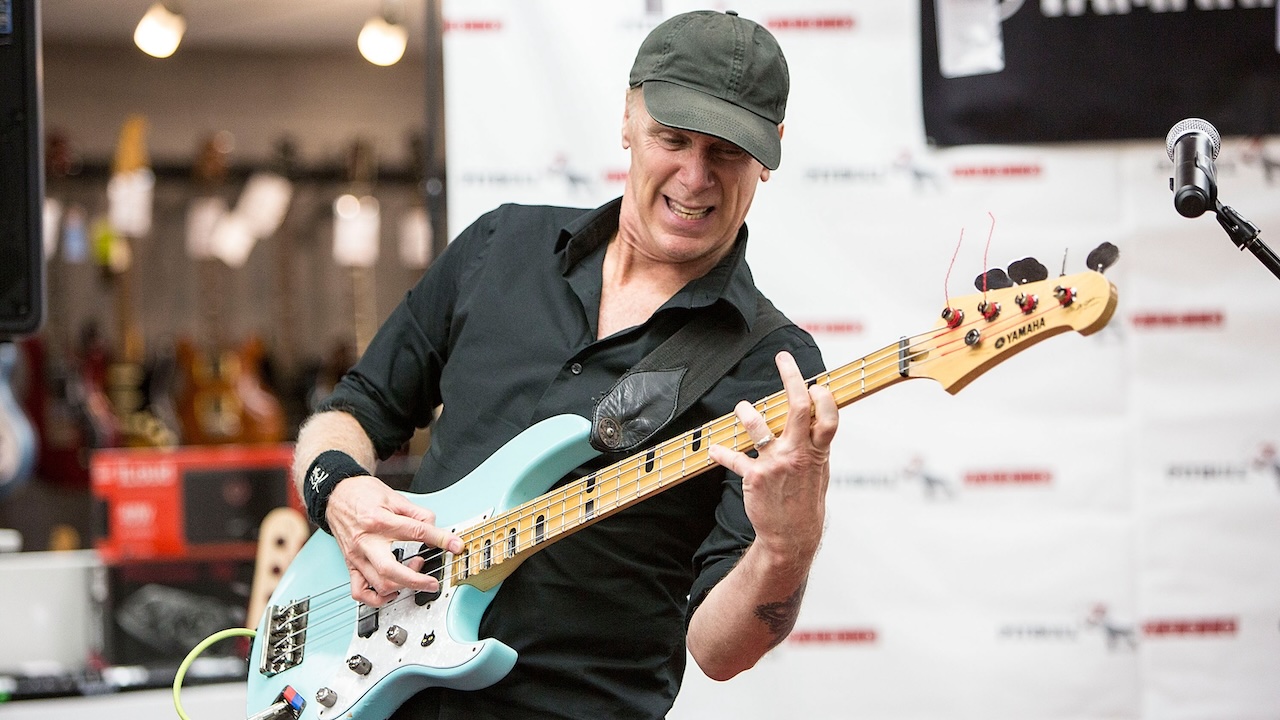“The three-finger thing is actually easy. It’s like learning the patterns on a video game until you conquer it”: Billy Sheehan explains his three-finger plucking technique
After almost 60 years of playing bass, Billy Sheehan is still learning – and still flooring listeners

Whether you take your Billy Sheehan as a member of Mr. Big, as a solo artist or as a session gun for hire, he needs little introduction. A master of his instrument to almost otherworldly levels, Sheehan has earned a reputation as one of the world’s most accomplished bassists.
“It’s all common sense and natural motions,” said Sheehan about his outrageous yet highly refined playing techniques. “I remember when Space Invaders and games like that first came out. I couldn't get anywhere near the huge scores some of the kids were racking up. I'd just shoot away at anything until I watched some of these high-score heroes in action, and the penny dropped! They were playing in patterns, and could anticipate the movements of the targets.
“That was it: I applied that system to my bass playing using pattern boxes, or chord shapes, which I got to know really well, and could move about the fretboard. I probably use about three patterns to get the high-speed effects.”
As the new Mr. Big album Ten nears release, Sheehan was on hand to talk technique, and the key to making it work.
How often do you evaluate your bass playing?
“I have torn apart, redesigned, and reconstructed my bass playing probably 10 times. I step back, reassess, and rebuild everything. After years of playing, I still love to pick up that hunk of wood and just hang out with it. I'm generally working on eight to 10 new moves at any given time.”
Can you share a cool move?
Get The Pick Newsletter
All the latest guitar news, interviews, lessons, reviews, deals and more, direct to your inbox!
“I'll cross my right hand and hold down four notes across all four strings. In one instance it's a C on the E string, a G on the A string, C on the D string, and the octave G on the G string, which is a 5th, a 4th, and a 5th pattern. I reach under the neck with my left hand, and no matter what I play, it comes back down to a very friendly chord that works with almost anything, especially droning stuff.”
Can you describe your three-finger technique?
“I play a lot of driving 16th- or 32nd-note things that are smooth and fast. It's somewhat of a Rocco Prestia vibe, but more rock- or metal-oriented. It's essential to string the notes together consistently in time and flowing with the groove of the track. I always pluck my fingers in the same direction. You can hear accented groups of four, even though I'm playing with three fingers.”

“So for each bar, the beat one accent is played with a different finger – index, middle, ring, and repeat. It's totally confusing; that's why thinking about it will never work. I just drilled it in over thousands of gigs and created a machine out of my hands. I try to make my playing flow as naturally as breathing – it's automatic, even during a solo. I just fly by the seat of my pants!”
What appears difficult about your style that is actually very simple?
“The three-finger thing is actually rather easy; anyone can do the mechanics eventually. It's like learning the patterns on a video game until you conquer it. You can do that on a bass guitar, but that's not music. In fact, I didn't pay any attention to mechanics for a long time, and I only figured it out when I had to explain it to someone else.”
Have you read up on the theory behind the technique?
“I still don't usually have any idea what scales l’m playing, but I can hear a scale and understand its function in a song. I wish I knew more theory, and I will someday. I dropped out my senior year of high school, but l'm a tireless self-educator who is always working on learning vocabulary.”

When you play in a new project, what's your starting point?
“The drummer. My very first teacher taught me that regardless of what else goes on, you've got to play a bass note at the same time as the kick drum, which is 99 percent of how bass playing works. Eventually I started incorporating fills and accents, but I only got away with an aggressive style because it was locked to the drummer from the beginning.”
Which drummer do you connect with best?
“Dennis Chambers changed my life. No matter how complicated the rhythm, his internal clock is foolproof, and playing onstage with him gave me a whole new way to treat time. For many years I relied on the drummer's clock. With Dennis I discovered – don't do that. Your own internal clock has to be running.”

Nick Wells was the Editor of Bass Guitar magazine from 2009 to 2011, before making strides into the world of Artist Relations with Sheldon Dingwall and Dingwall Guitars. He's also the producer of bass-centric documentaries, Walking the Changes and Beneath the Bassline, as well as Production Manager and Artist Liaison for ScottsBassLessons. In his free time, you'll find him jumping around his bedroom to Kool & The Gang while hammering the life out of his P-Bass.
“I asked him to get me four bass strings because I only had a $29 guitar from Sears”: Bootsy Collins is one of the all-time bass greats, but he started out on guitar. Here’s the sole reason why he switched
“I got that bass for $50 off this coke dealer. I don’t know what Jaco did to it, but he totally messed up the insides!” How Cro-Mags’ Harley Flanagan went from buying a Jaco Pastorius bass on the street to fronting one of hardcore’s most influential bands











